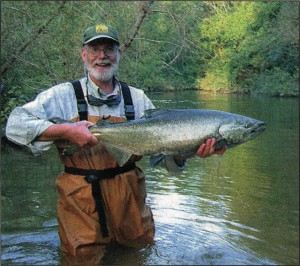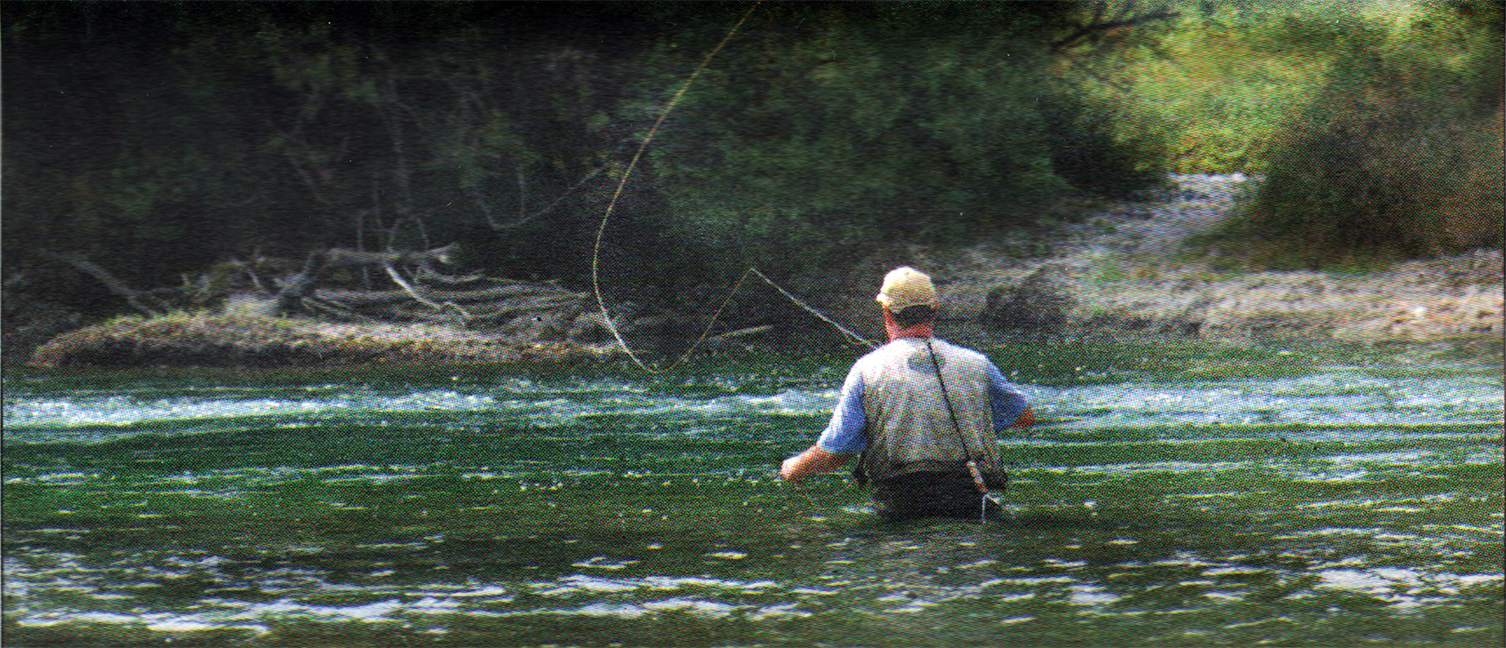Fly fishing the area’s world-class waters
By Patrick Daly
This article was originally published during the summer of 2005.
Northern Michigan has been a fixture for seasonal fly-anglers as a “hot spot” to tame such resilient species of fish as the Chinook (king) salmon, Coho salmon, brown trout, steelhead and even lake trout. But not until more recently has the phenomena of fly-fishing gained rampant popularity in our very own Benzie County. While the county boasts several small lakes and streams, the more prominent angling areas consist of six lakes, and two rivers.
Once considered a “fringe” branch of the fishing world, fly-casters have quickly ascended the ranks as scientific, eco-conscious and high percentile specialists who crave the sport of landing big fish.
Just ask Pete Micol, a veteran fly-fisherman and guide with Float and Fly Guide Service, what he thinks of the county’s offerings. “I came up here with a buddy of mine for a weekend back in 1969, and we just kept coming back,” Micol exclaims. Pete did more than come back though; he studied the area and eventually honed his skills to the point where he runs a world famous guide service offering fishing trips from January to December. Using the current of the Betsie, Micol ushers new interest and new faces to the area for a unique and responsible fishing understanding. “We practice catch and release exclusively,” Micol explains, “I plan our trips based on maximizing the total experience.”
The “experience” is the name of the game here. Pete explains that the Betsie is a great river for beginners, as they do not need to “cast very far.” This is one aspect of the local river system that cannot be overlooked. County river are not raging torrents, so access to holes, eddies and spawning grounds is plentiful. 
The waters are shallower and the rivers are not as wide as they once were. One reason for this is the recent influx of sand into the rivers, particularly on the Betsie. After the collapse of the Thompsonville dam, a noticeable amount of sand found its way down river to literally “shallow” the waters. Perhaps no greater example of this is exhibited in Betsie Bay, where near the shore, one will notice a long jutting sand bar stemming from the river mouth. Dams have routinely been removed and or replaced over the years due to aging, and this has initiated the implementation of sand traps to try and quell the flow. However, this phenomenon hasn’t kept the fish from biting.
The consistent Coho and Chinook salmon presence in Benzie waterways may be attributed to the DNR. The Platter River State Fish Hatchery, located in Beulah (four miles east of Honor on US-31), serves as the main egg station for Coho in the entire upper Great Lakes regions. Since salmon can migrate out of the waterways as yearlings, unlike trout, which sometimes succumb to high summer temperatures, this hatchery provides an inherent boost to the salmon population on a yearly basis. Furthermore, wild salmon come from these waters, which add to the purist’s enjoyment.
While Pete Micol runs his guide service year round, there are some times of the year that offer a more bountiful catch. Chinook and Coho salmon tend to start their run in September and continue through October. It’s not uncommon to see a fisherman every couple of hundred yards along the Betsie during this peak season.
November brings the arrival of the steelhead. According to Pete, the summer rainfall indicates this launch date. “If we get a lot of rain in the summer, it is a good sign that we’ll have a strong season, but if not, sometimes you don’t get any,” Micol says. With hotter summers and less rainfall in recent years, the Betsie River has seen less of some species that were once prevalent in the area. Micol describes the ‘60s as a time when brown trout were far more populous in the river, and he credits this change to these climate trends.
As many fly fishers claim to have their own recipe for tying the right flies, there are generally two schools of thought regarding presentation. Generic fly patterns (attractors), like the ones Pete Micol uses, are a more general way to match the food source on the river. Generic patterns maintain color and general shape, but are less specific than the other option, specific flies (like a brown drake). These flies are often tied to mimic the exact color and structure of a common food source, but offer less usability when conditions change or when a new food source might be spotted in the course of a day.
Not only does Benzie County provide one of the most scenic and majestic backdrops to a sport that has been gaining momentum throughout the area, but also it is home to multiple fly fishing guides, and miles upon miles of streams, rivers and lakes. From beginners to world-class experts, the fish-angler stands to catch world-class fish when visiting our local waters. So the next time a man or woman wearing waders is crossing the street with a 10 food pole in their hands, know that they will soon be hooked into some of the liveliest and wild fish species found in North America.
For up-to-date information on Micols, please visit his website http://flyfishingwithpete.com/




